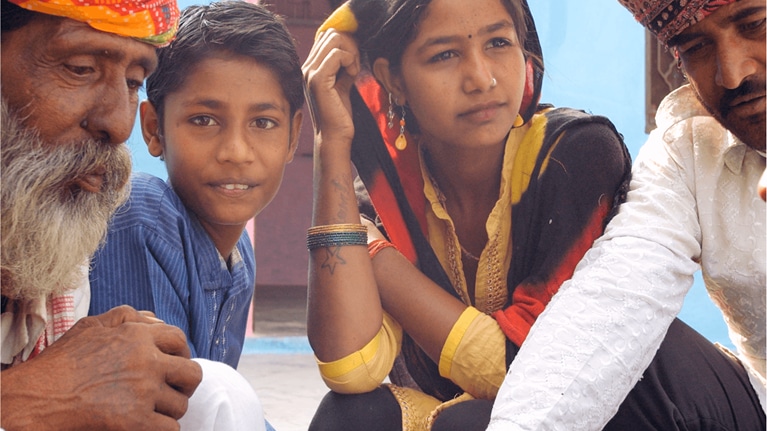As highlighted in the report Prioritizing health: A prescription for prosperity, applying known health interventions could dramatically extend and improve life. Explore the map below to discover the magnitude of disease burden in each country and learn about opportunities1 to gain healthy years by applying proven interventions.

Prioritizing Brain Health
- All health conditions
- Communicable, maternal, neonatal ...
- Enteric infections
- HIV/AIDS and STIs
- Maternal and neonatal disorders
- Neglected tropical diseases and malaria
- Nutritional deficiencies
- Respiratory infections and tuberculosis
- Other infectious diseases
- Non-communicable diseases
- Cardiovascular diseases
- Chronic respiratory diseases
- Diabetes and kidney diseases
- Digestive diseases
- Mental disorders
- Musculoskeletal disorders
- Neoplasms
- Neurological disorders
- Sense organ diseases
- Skin and subcutaneous diseases
- Substance use disorders
- Other non-communicable diseases
- Injuries
- Self-harm and interpersonal violence
- Transport injuries
- Unintentional injuries
Years of life lost to disease or death
- All health conditions
- Communicable, maternal, neonatal ...
- Enteric infections
- HIV/AIDS and STIs
- Maternal and neonatal disorders
- Neglected tropical diseases and malaria
- Nutritional deficiencies
- Respiratory infections and tuberculosis
- Other infectious diseases
- Non-communicable diseases
- Cardiovascular diseases
- Chronic respiratory diseases
- Diabetes and kidney diseases
- Digestive diseases
- Mental disorders
- Musculoskeletal disorders
- Neoplasms
- Neurological disorders
- Sense organ diseases
- Skin and subcutaneous diseases
- Substance use disorders
- Other non-communicable diseases
- Injuries
- Self-harm and interpersonal violence
- Transport injuries
- Unintentional injuries
- Current data limitations in the model lead to an underestimation of the size of opportunity to reduce disease burden specific to brain health conditions. Further analysis is underway as research yields more evidence-based treatment options related to: mental health, neurological disorders, substance use, and self-harm.
- “Disease burden” in this interactive is defined as the impact of a disease or health condition on a given population. These statistics are based on 2019 data from Institute for Health Metrics and Evaluation.
- “Health opportunity” in this interactive is defined as the healthy years of life that can be gained in a population by the application of proven interventions.
- Years lost are measured in DALYs, which stands for disability-adjusted life years. One DALY equals one year of healthy life lost to premature death and or poor health due to chronic disease or disability.
For complete notes on data, definitions, and underlying methodology for this interactive, see the McKinsey Global Institute report Prioritizing health: A prescription for prosperity.
How interventions could improve health
Opportunity to reduce disease burden
- All health conditions
- Communicable, maternal, neonatal ...
- Enteric infections
- HIV/AIDS and STIs
- Maternal and neonatal disorders
- Neglected tropical diseases and malaria
- Nutritional deficiencies
- Respiratory infections and tuberculosis
- Other infectious diseases
- Non-communicable diseases
- Cardiovascular diseases
- Chronic respiratory diseases
- Diabetes and kidney diseases
- Digestive diseases
- Mental disorders
- Musculoskeletal disorders
- Neoplasms
- Neurological disorders
- Sense organ diseases
- Skin and subcutaneous diseases
- Substance use disorders
- Other non-communicable diseases
- Injuries
- Self-harm and interpersonal violence
- Transport injuries
- Unintentional injuries
- All health conditions
- Communicable, maternal, neonatal ...
- Enteric infections
- HIV/AIDS and STIs
- Maternal and neonatal disorders
- Neglected tropical diseases and malaria
- Nutritional deficiencies
- Respiratory infections and tuberculosis
- Other infectious diseases
- Non-communicable diseases
- Cardiovascular diseases
- Chronic respiratory diseases
- Diabetes and kidney diseases
- Digestive diseases
- Mental disorders
- Musculoskeletal disorders
- Neoplasms
- Neurological disorders
- Sense organ diseases
- Skin and subcutaneous diseases
- Substance use disorders
- Other non-communicable diseases
- Injuries
- Self-harm and interpersonal violence
- Transport injuries
- Unintentional injuries
Environmental, social, and behavioral interventions include measures to decrease pollution, improve road safety, avoid smoking and substance usage, encourage physical activity, and promote healthy nutrition.
Disease prevention and health promotion interventions monitor and manage health risks through immunizations and vaccines, maternity services (including antenatal, intrapartum, and postnatal care), screening services, basic dental care, vision tests and provision of glasses. Disease prevention and health promotion interventions can also include basic primary care services intended to prevent the development of chronic conditions such as cardiovascular disease and diabetes.
Therapeutic interventions include chronic disease management and acute treatment of established disease, as well as surgical and medical interventions.
By 2040, the world could gain these benefits by expanding known health interventions:
226 million
premature deaths prevented+21 healthy days
per person each year (on average)252 million
additional people in the labor force12,116 billion
increase in GDP
For complete notes on these, see Methodology sidebar section in the McKinsey Global Institute report Prioritizing health: A prescription for prosperity.
Note: The category of “Other infectious diseases” includes diseases such as meningitis, encephalitis, diphtheria, tetanus, measles, varicella and herpes zoster, and acute hepatitis. The category of “Other non-communicable diseases” includes congenital birth defects, urinary diseases and male infertility, gynecological diseases, hemoglobinopathies and hemolytic anemias, endocrine, metabolic, blood, and immune disorders, oral disorders, and sudden infant death syndrome.
Institute for Health Metrics and Evaluation, used with permission, all rights reserved; World Bank Open Data, Oxford Economics, International Labor Organization, McKinsey Global Institute analysis
The boundaries and names shown on maps do not imply official endorsement or acceptance by McKinsey & Company.
Not all countries included due to metric availability. Not all totals sum to Global or 100% due to rounding.


